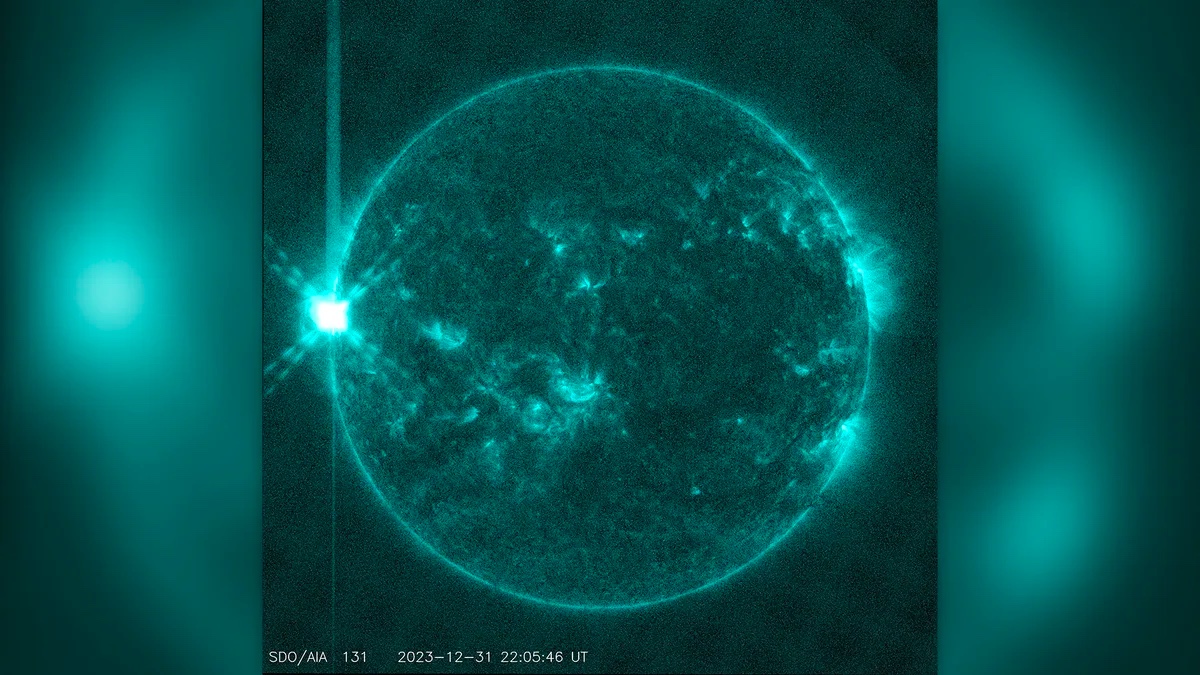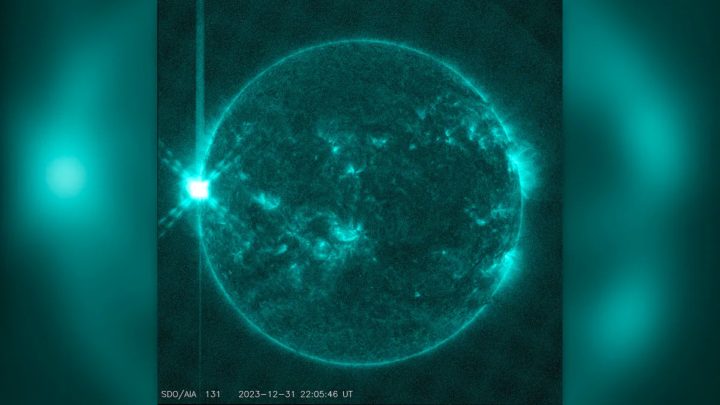The Sun, approaching maximum activity on its 25th cycle, unleashed a massive solar flare of class X5 on December 31, 2023. An explosion so powerful that we have to go back to 2017 for an example of a similar caliber. But the question that always remains in the air is: What impact will this have on the ground?
2024 could be the year of big explosions on the Sun
It was a kind of fireworks to ring in the new year. In the final hours of December 31, 2023, near-Earth satellites detected a giant X5 solar flare from our star, closing out the year with the most powerful solar flare observed since 2017.
According to the National Oceanic and Atmospheric Administration (NOAA) The eruption was accompanied by a giant swath of high-speed solar particles, known as a coronal mass ejection (CME), which barely touched Earth's magnetic field on January 2.
These events, solar flares, occur when the Sun's magnetic fields become too tangled and snap like rubber bands, causing powerful waves of radiation to cross space very quickly. to Class X torches are the most powerful type Solar flares are known to interfere with satellites, radio systems and electrical grids when the accompanying bursts of radiation pass over the Earth.
A powerful explosion that did not shoot toward Earth
The X5 eruption on December 31 was the most powerful of 2023, easily beating the massive X2.8 eruption that blasted off from the exact same point on the Sun on December 14. At the time, this X2.8 flare was also announced to be the strongest flare since September 10, 2017, when a giant X8.2-class flare exploded from the star, according to NOAA.
The New Year's Eve glow was also the strongest in the current solar cycle - Solar Cycle 25, which began in 2019 and is expected to reach its peak this year. our The star follows an 11-year activity cycle. It reaches a peak called solar maximum in the middle of the cycle. Although the peak of the current cycle was initially expected in 2025 and was relatively mild, a bout of solar activity in 2023 prompted scientists to revise their forecasts.
It is expected that Solar maximum occurs sometime in 2024. If last year's intense solar activity is any indication, the rise will be strong; In addition to these powerful outbursts, 2023 will also see the strongest geomagnetic storm in the past 20 years, as well as a 20-year high in the number of sunspots observed in a single month.
These storms, when they collide with Earth on their way, can produce widespread auroras in the sky and small geomagnetic storms. But something much stronger cannot be ruled out.

“Coffee trailblazer. Social media ninja. Unapologetic web guru. Friendly music fan. Alcohol fanatic.”


